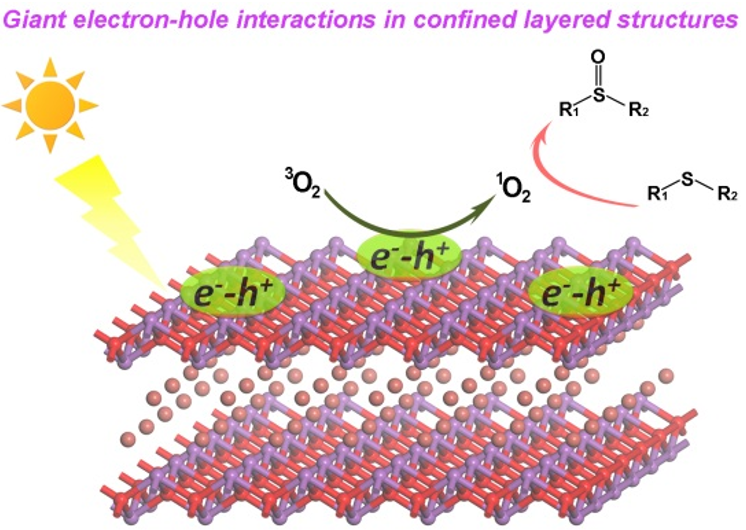Giant Electron–Hole Interactions in Confined Layered Structures for Molecular Oxygen Activation
Recently, research group from University of Science and Technology of China led by Prof. Yi Xie got new progress in excitonic research of photocatalysts. They proposed that giant electron–hole interactions would be expected in confined layered structures, which greatly influenced their photocatalytic molecular oxygen activation behaviors. The work has been published as an article in Journal of American Chemical Society (J. Am. Chem. Soc., DOI: 10.1021/jacs.6b12273).
Photocatalytic research has drawn numerous attentions for its significance in solving energy crisis and environmental pollution, whereas the potential Coulomb interactions between photogenerated electrons and holes (that is, excitonic effects) in photocatalysts have has long been neglected, which inevitably hinders further investigations. In that case, it would be quite necessary to understand the influence of excitonic effects on photocatalytic process.
Herein, by taking bismuth oxyhalide as an example, the researchers demonstrate that giant electron–hole interactions would be expected in confined layered structures, thus raising facet engineering strategy for the regulation of excitonic process. Theoretical calculations indicate that the simultaneous localizations of conduction and valence band edge states on Bi atomic sites, implying potential enormous electron–hole interactions. Further photoluminescence measurements verify the giant electron–hole interactions and long-lived excitonic states in these materials, in which the facet-dependent feature clearly suggests the dominating contributions of structural confinement. Photocatalytic molecular oxygen activation tests suggested that (001) facet favored photocatalytic singlet oxygen generation via energy transfer process, thus promising its potentials in the selective sulfoxidation reaction.
This study not only provides an excitonic prospective on photocatalytic processes, but also paves a new approach for pursuing robust excitonic materials.

Publication link: http://pubs.acs.org/doi/abs/10.1021/jacs.6b12273
Back
